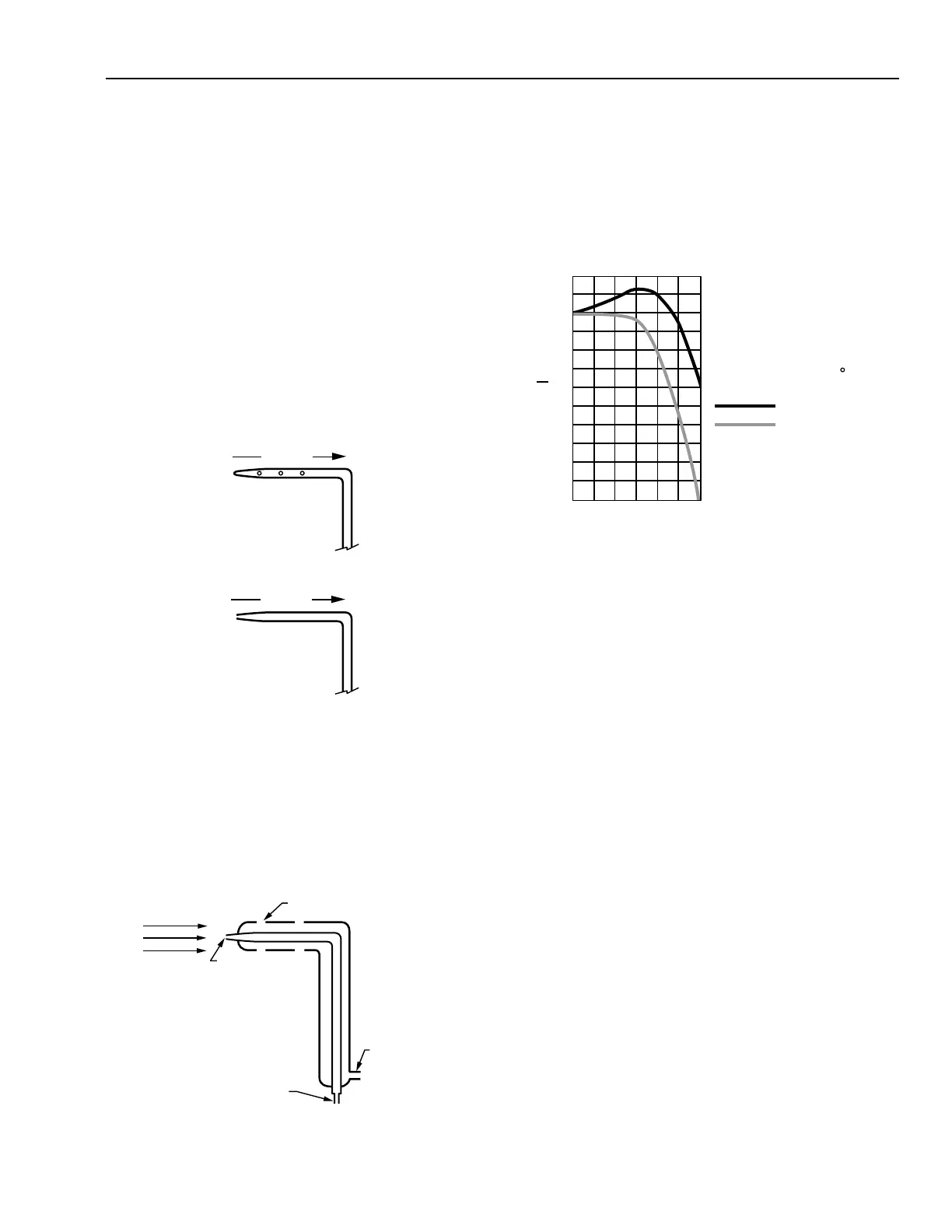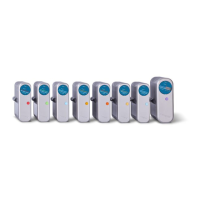ENGINEERING MANUAL OF AUTOMATIC CONTROL
BUILDING AIRFLOW SYSTEM CONTROL APPLICATIONS
277
MEASUREMENT OF AIRFLOW IN DUCTS
GENERAL
Total pressure and static pressure can be measured directly;
velocity pressure cannot. Velocity pressure is found by subtracting
the static pressure from the total pressure. This subtraction is
typically done by differential pressure measuring devices.
PRESSURE SENSORS
Some applications require only the measurement of static
pressure. To obtain an accurate static pressure measurement, a
static pressure sensor (Fig. 14A) is used. This sensor has a closed,
bullet-shaped tip followed by small peripheral holes that are
perpendicular to the airflow for measuring air pressure. The total
pressure sensor (Fig. 14B) is similar except there is an opening in
the end of the tube and no openings along the sides.
AIRFLOW
AIRFLOW
C2654
A. STATIC PRESSURE SENSOR.
B. TOTAL PRESSURE SENSOR.
Fig. 14. Pressure Sensors.
PITOT TUBE SENSORS
A pitot tube measures both total pressure and static pressure.
This device combines the total pressure sensor and the static
pressure sensor tubes into one device (Fig. 15).
C2655
DIRECTION
OF
AIRFLOW
STATIC
PRESSURE
TUBE
TOTAL
PRESSURE
TUBE
IMPACT
OPENING
SMALL STATIC
PRESSURE OPENINGS
Fig. 15. Pitot Tube.
To obtain accurate velocity pressure readings, the pitot tube
tip must point directly into the air stream. Figure 16 shows the
error in static and total pressure readings when the pitot tube
does not point directly into the air stream. Misaligning a pitot
static pressure tube causes the static readings to first increase
and then drop off rapidly as the angle of inclination (θ) increases.
The total pressure reading drops off gradually and then more
rapidly as θ increases. (Modern Developments in Fluid
Dynamics, Volume 1, Dover Publications, Copyright 1965.)
1.2
1.1
1.0
0.9
0.8
0.7
0.6
0.5
0.4
0.3
0.2
0.1
0
0
C2656
10 20 30 40 50 60
P
o
P
P
o
= PRESSURE WHEN
θ
= 0.
STATIC TUBE
TOTAL PRESSURE
TUBE ONLY
P
= PRESSURE AT INCLINATION
θ
.
ANGLE OF INCLINATION
θ
DEGREES
θ
θ
Fig. 16. Error Caused by Improperly
Mounting Pitot Tube in Airstream.
The following are guidelines for using pitot tubes:
1. A pitot tube can be used to measure either static or total
pressure.
2. A pitot tube measures the velocity at one point. However,
several readings across the duct (a traverse) are normally
needed to obtain an accurate average velocity.
3. Accurate pressure readings cannot occur in locations with
varying swirls, eddies, or impinged air. Because of this:
— The pitot tube must be inserted into the air stream
at least 10 duct diameters downstream from
elbows, and five duct diameters upstream of
bends, elbows, or other obstructions which cause
these effects. (See DEFINITIONS for a
description of round and rectangular duct
diameters.)
— Air straightening vanes must be located upstream
from a pitot tube location to ensure accurate
readings. Rotating airflow can occur in long,
straight, duct sections. If air straightening vanes
are not used, this nonparallel airflow can strike a
pitot tube at an angle and produce false total and
static pressure measurements.
4. It is impractical to use the pitot tube (or devices using its
principles) at velocities below about 3.5 m/s (velocity
pressure of 7.60 Pa).
Even with an inclined manometer, velocity pressures below
7.60 Pa are too small for reliable measurement outside of a
well equipped laboratory. According to the Industrial Ventilation
Manual 17th Edition, 1982, “A carefully made and accurately

